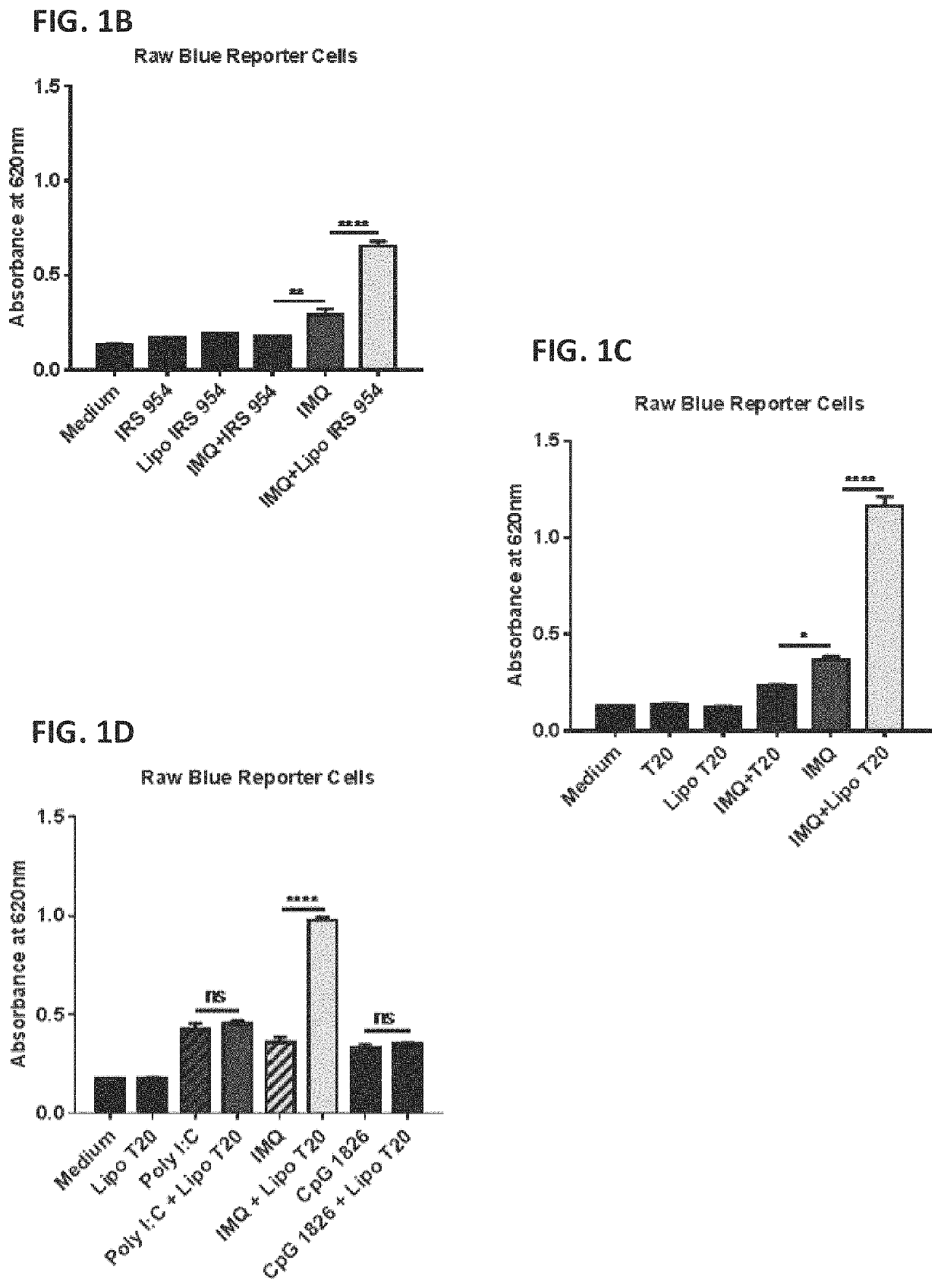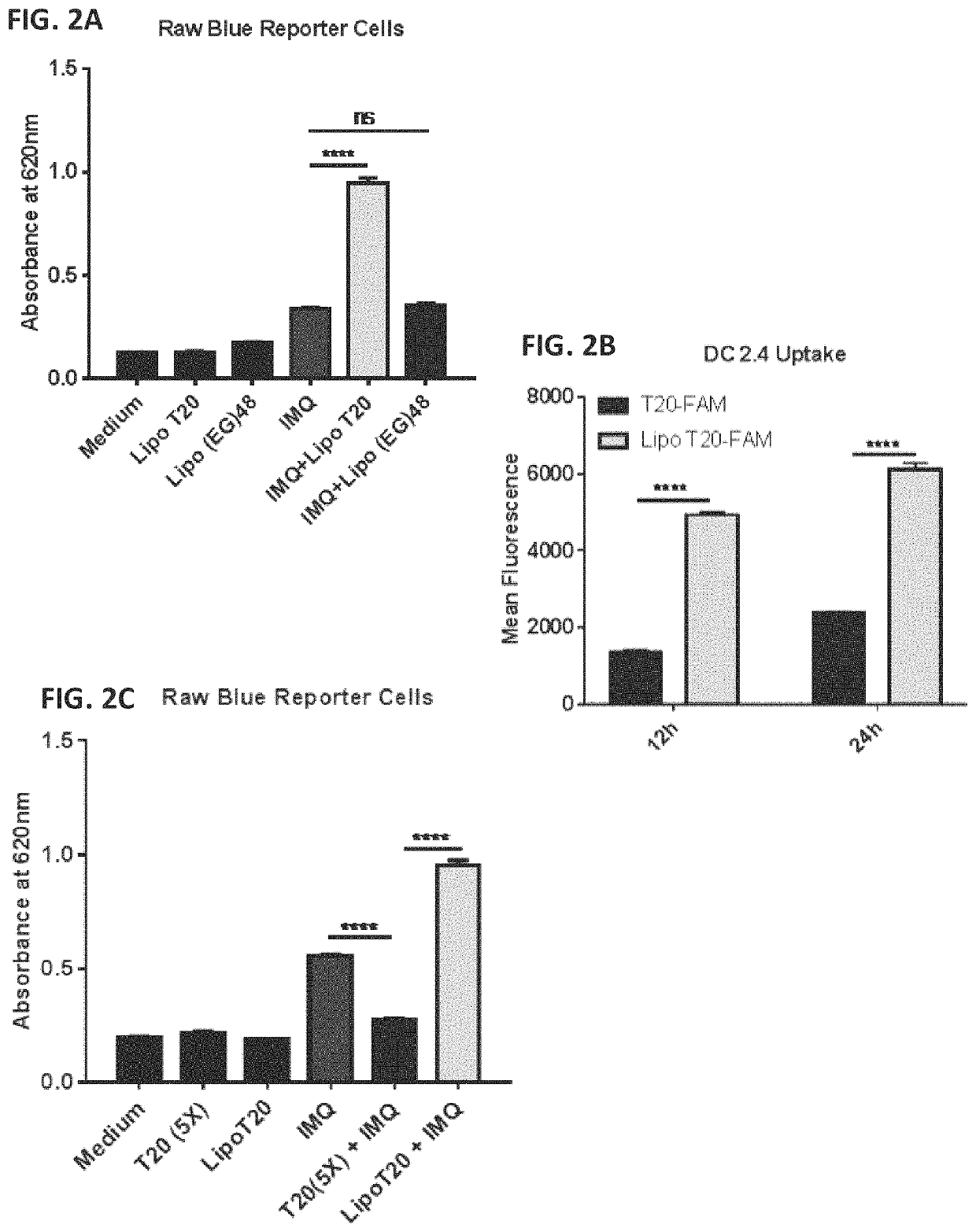Amphiphilic oligodeoxynucleotide conjugates as adjuvant enhancers
an amphiphilic oligonucleotide and adjuvant technology, applied in the field of adjuvant enhancers including amphiphilic oligonucleotides, can solve the problems of inapplicability to some vaccine settings (e.g., cancer vaccine therapy), poor immunogenicity, and the need for adjuvants to induce effective immune responses
- Summary
- Abstract
- Description
- Claims
- Application Information
AI Technical Summary
Benefits of technology
Problems solved by technology
Method used
Image
Examples
embodiment 1
2. The amphiphilic oligonucleotide conjugate of embodiment 1, wherein the lipophilic component includes a phospholipid, a diacyl lipid, a fatty acid, a cholesterol, bile, or a steroid.
3. The amphiphilic oligonucleotide conjugate of embodiment 1 or 2, wherein the lipophilic component includes a linear, branched, or cyclic lipid 8-30 carbons in length.
4. The amphiphilic oligonucleotide conjugate of any one of embodiments 1-3, wherein the lipophilic component includes:
[0148]
5. The amphiphilic oligonucleotide conjugate of any one of embodiments 1-4, wherein the immunomodulating oligonucleotide includes a oligodeoxynucleotide (ODN).
embodiment 5
6. The amphiphilic oligonucleotide conjugate of embodiment 5, wherein the ODN includes 5-50 nucleotides.
7. The amphiphilic oligonucleotide conjugate of embodiment 5, wherein the ODN includes 15-25 nucleotides.
8. The amphiphilic oligonucleotide conjugate of any one of embodiments 1-7, wherein the ODN includes a poly-oligo(dT) of 5-50 nucleotides (T5-T50).
embodiment 8
9. The amphiphilic oligonucleotide conjugate of embodiment 8, wherein the ODN includes a poly-oligo(dT) of 18-25 nucleotides (T18-T25).
10. The amphiphilic oligonucleotide conjugate of any one of embodiments 1-9, wherein the ODN includes a phosphorothioate bond or another modified (non-naturally occurring) bond.
11. The amphiphilic oligonucleotide conjugate of any one of embodiments 1-7 or 10, wherein the immunomodulating oligonucleotide includes the sequence of SEQ ID NO: 1, SEQ ID NO: 2, SEQ ID NO: 3, or SEQ ID NO: 4.
12. The amphiphilic oligonucleotide conjugate of any one of embodiments 1-11, further including a linker between the lipophilic component and the immunomodulating oligonucleotide.
13. The amphiphilic oligonucleotide conjugate of any one of embodiments 1-12, wherein the lipophilic component is conjugated to the immunomodulating oligonucleotide at its 5′ or 3′ terminal end.
14. The amphiphilic oligonucleotide conjugate of any one of embodiments 1-13, including:
[0149]
15. Use...
PUM
| Property | Measurement | Unit |
|---|---|---|
| aerodynamic diameter | aaaaa | aaaaa |
| pH | aaaaa | aaaaa |
| volume | aaaaa | aaaaa |
Abstract
Description
Claims
Application Information
 Login to View More
Login to View More - R&D
- Intellectual Property
- Life Sciences
- Materials
- Tech Scout
- Unparalleled Data Quality
- Higher Quality Content
- 60% Fewer Hallucinations
Browse by: Latest US Patents, China's latest patents, Technical Efficacy Thesaurus, Application Domain, Technology Topic, Popular Technical Reports.
© 2025 PatSnap. All rights reserved.Legal|Privacy policy|Modern Slavery Act Transparency Statement|Sitemap|About US| Contact US: help@patsnap.com



